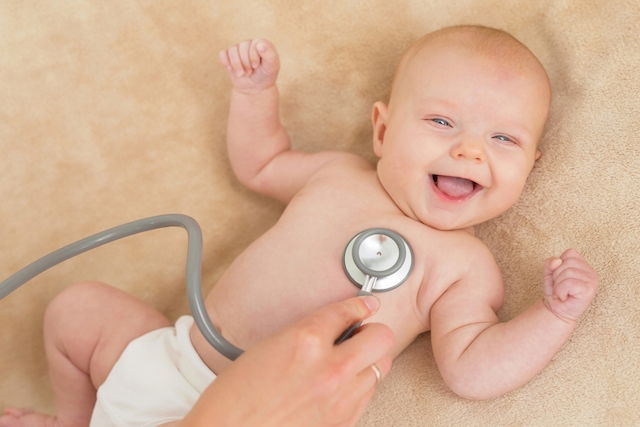A normal heart rate for kids is typically faster than the normal heart rate for adults. This is not a clinically significant finding. Kids’ heart rate tends to decrease during sleep or at rest, and increase when the child cries, feels pain or plays.
Changes to heart rate can be caused by illnesses like asthma, anemia or gastroenteritis, although these condition will usually be accompanied by other symptoms, like fever, vomiting, diarrhea or shortness of breath. Symptoms like drowsiness, fainting or difficulty breathing can be a sign of an even more serious condition, like an arrhythmia or meningitis.
It is important to consult a pediatrician if you notice changes to the normal heart rate of a kid, particularly if it is accompanied by other symptoms. You should seek urgent medical attention if changes to heart rate present with drowsiness or shortness of breath.

Normal heart rate ranges
The following table outlines ranges for normal heart rates for kids, starting at newborn age to 18 years old:
To measure a heart rate, the baby or child should be at rest for at least 5 minutes. You can use a pulse oximeter, which can be used on a finger tip or wrist.
Changes to heart rate in kids
Heart rates in babies and kids can increase or decrease depending on the situation, like whether the child is sleeping or experiencing a fever.
What increases heart rate?
A heart rate is considered to be high in a child when the rate is above the normal average limit for the child’s age. Common situations that can increase heart rate include fever and crying, however more serious conditions, like a lack of oxygen, dehydration, pain, anemia arrhythmia can also increase heart rate.
What decreases heart rate?
A heart rate is considered to be low in a child when rate is below the average limit for the child’s age. Generally, decreases occur at rest or when sleeping, but they can also be a sign of an arrhythmia, hypothyroidism, shortness of breath or increased intracranial pressure.
What to do when heart rate is abnormal
Some measures that can help to normalize heart rates in children include:
- Treating fevers with baths and medication, as prescribed by a doctor
- Preventing dehydration by ensuring adequate fluid intake
- Administering electrolyte solutions when the child has diarrhea or is vomiting
- Treating asthma attacks with bronchodilators, as prescribed by the doctor
When changes to heart rate in the child present with other symptoms, however, you should see a pediatrician as soon as possible to identify the underlying cause and start treatment as necessary.
Symptoms like fainting, drowsiness, pallor, fatigue, decrease urine output or patchy or blue skin should be assessed urgently in the emergency room.
When to worry
It is important to consult a pediatrician if the child presents with:
- Fever
- Pain
- Diarrhea
- Vomiting
- Wheezing
- Cough
Symptoms like pallor, drowsiness, fainting, difficulty breathing, fatigue, decrease urine output or skin color changes should be assessed in a hospital setting. Children that present with high heart rates even when at rest or with inconsolable crying should be assessed in the hospital.
